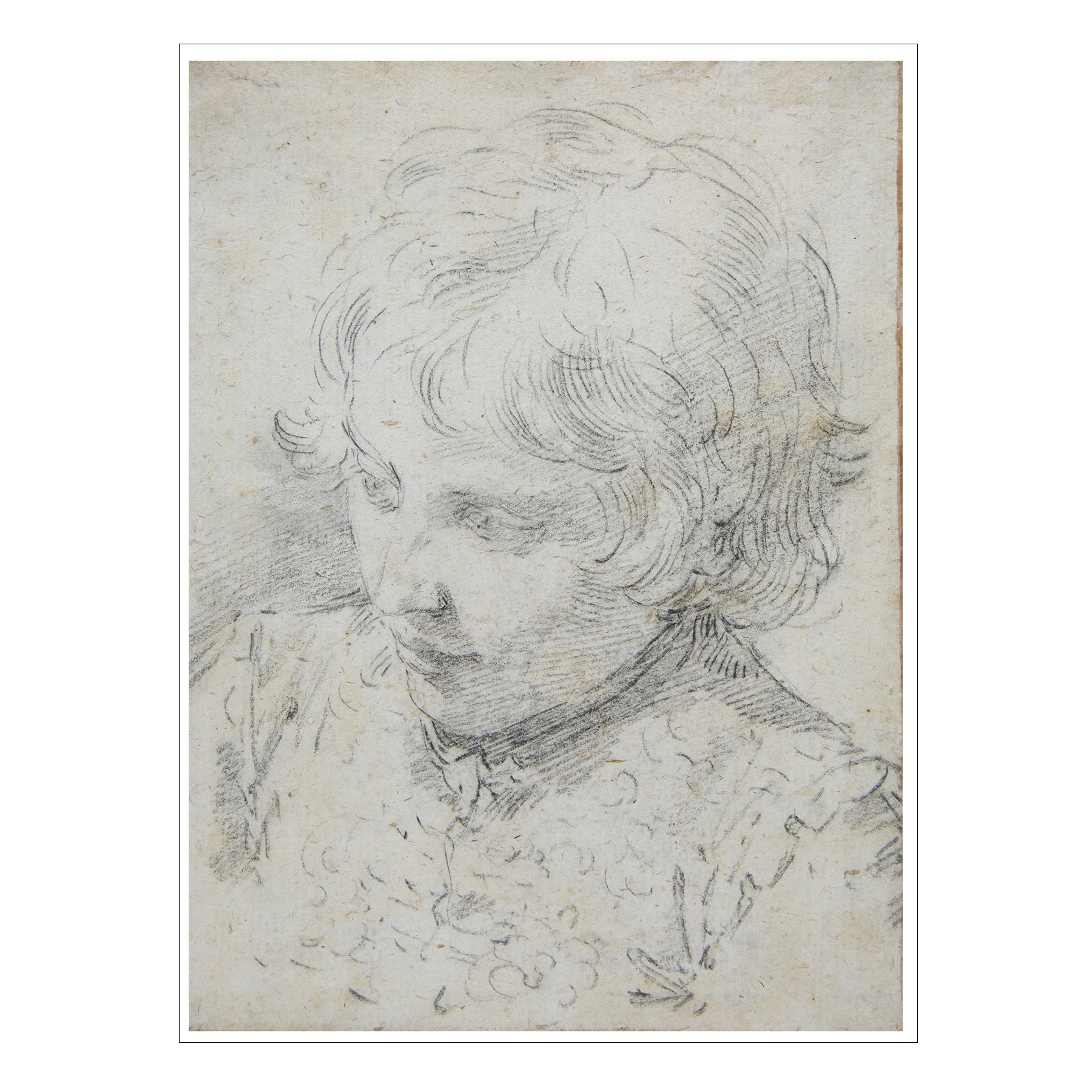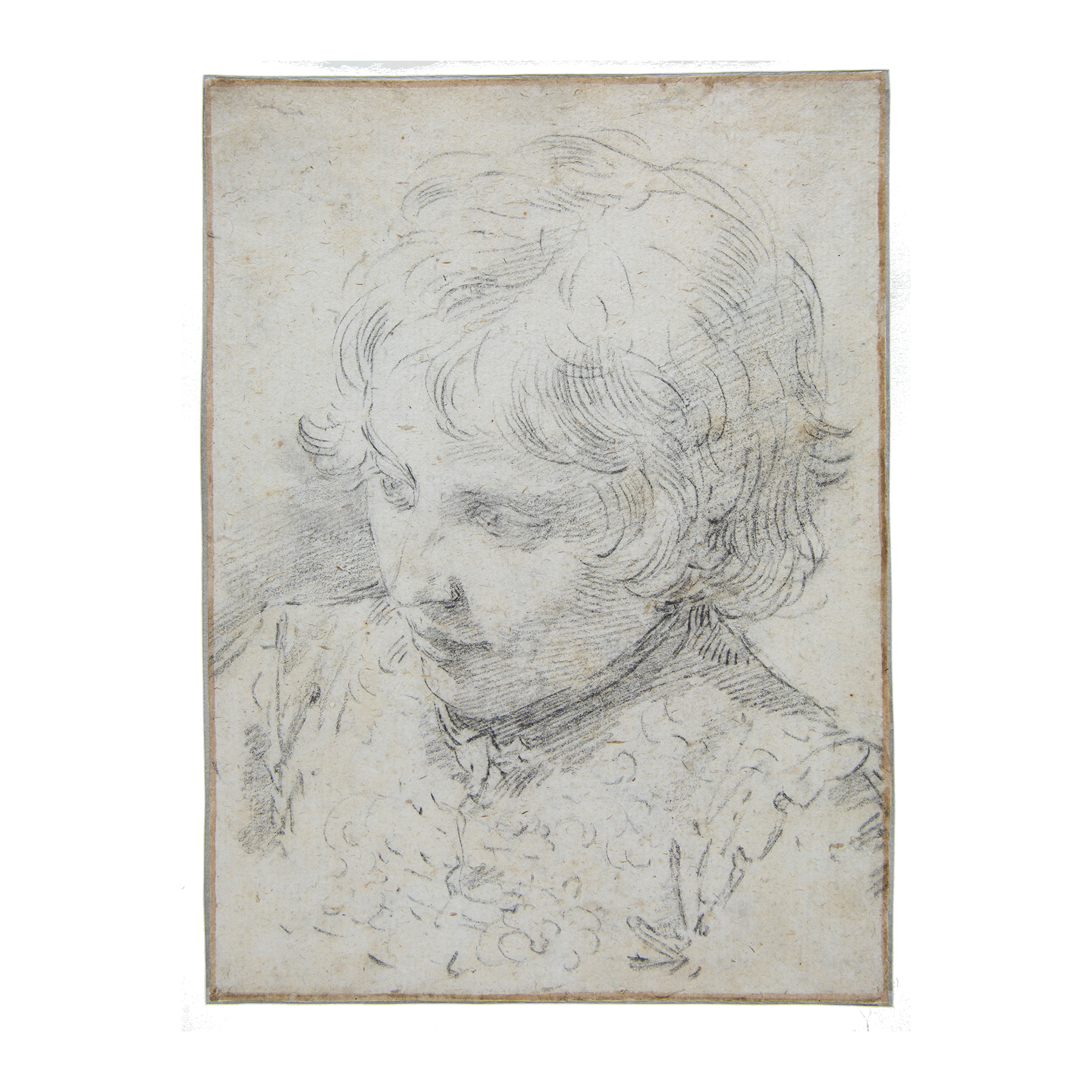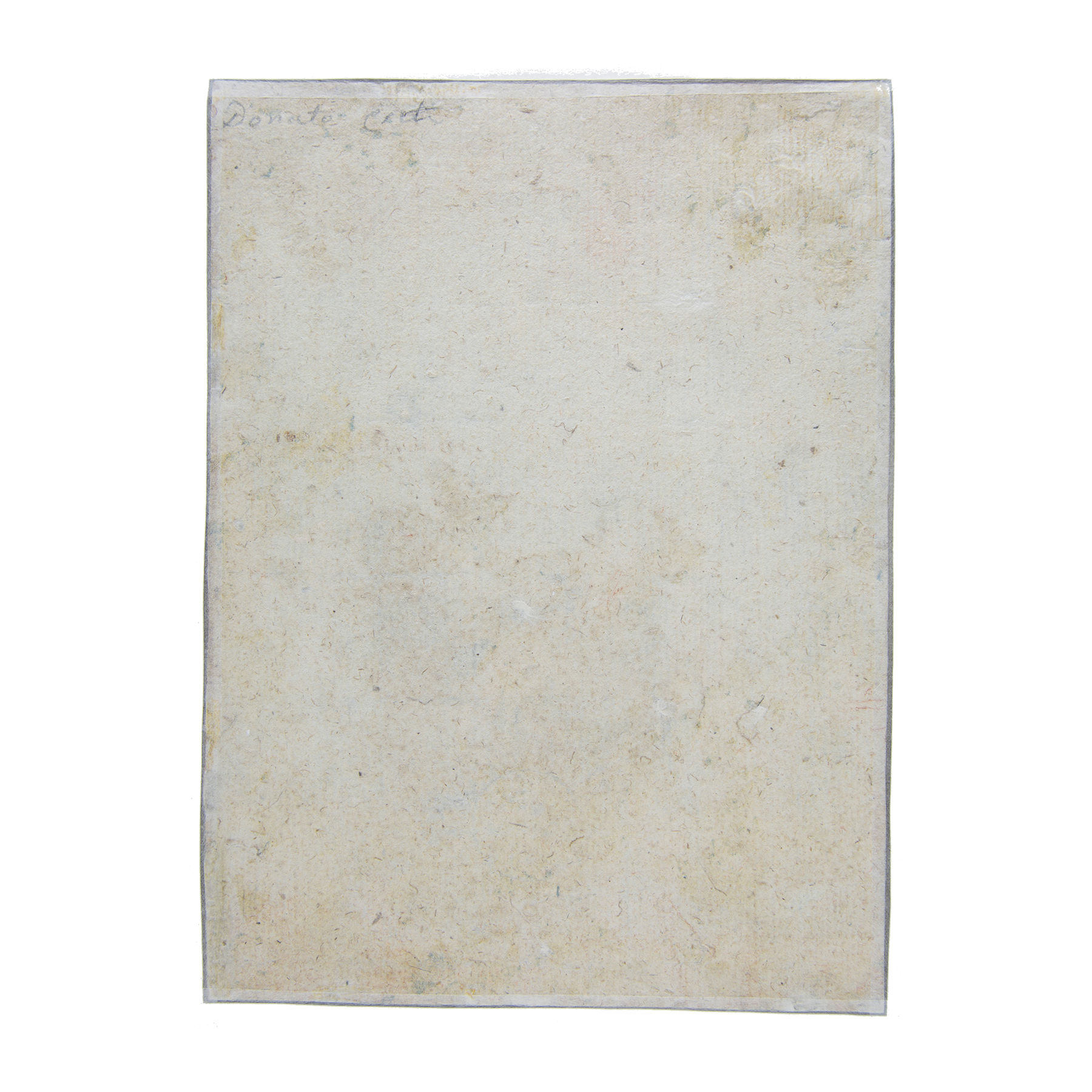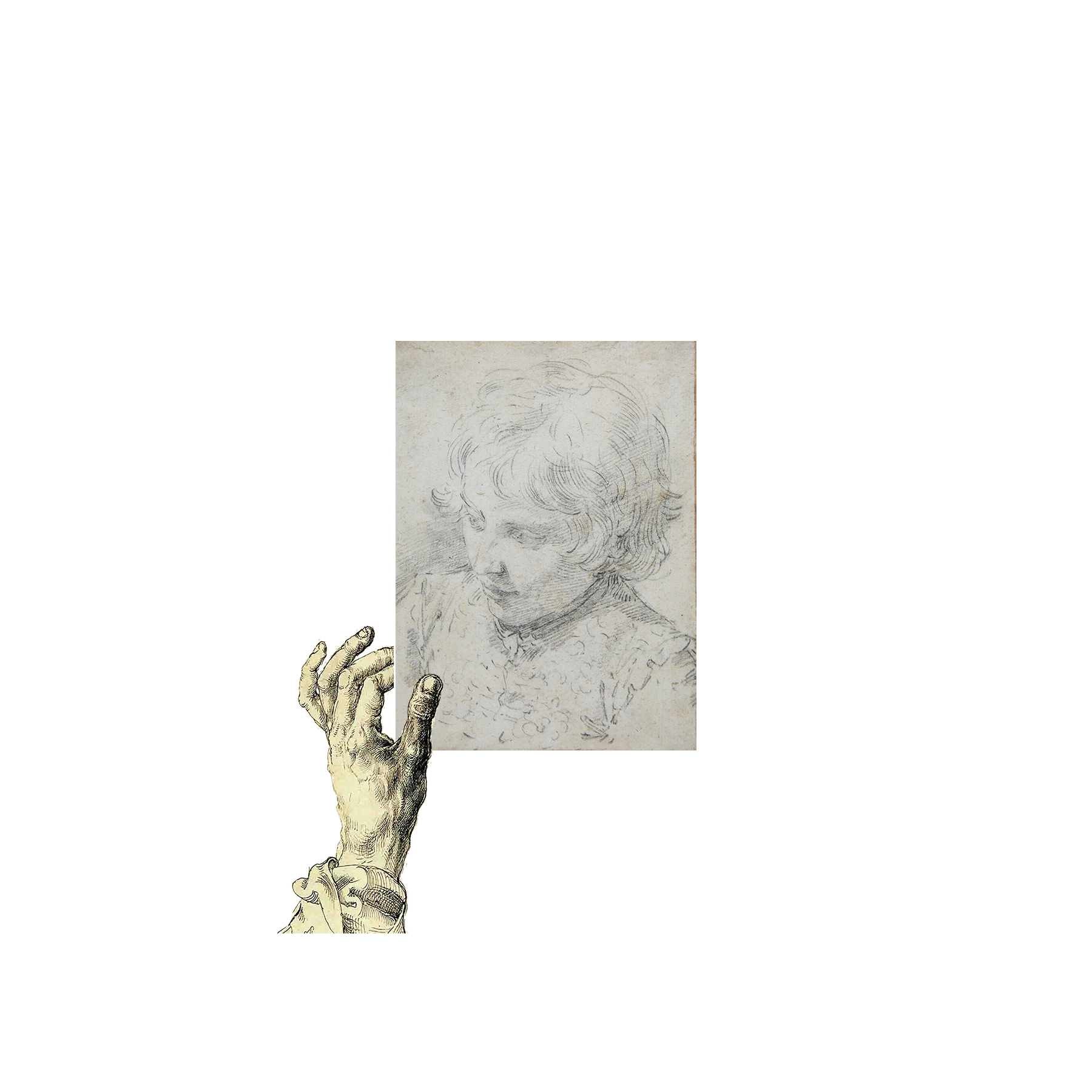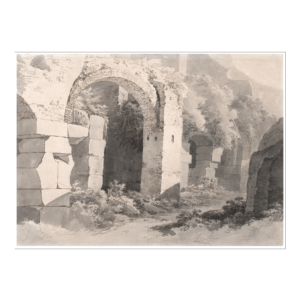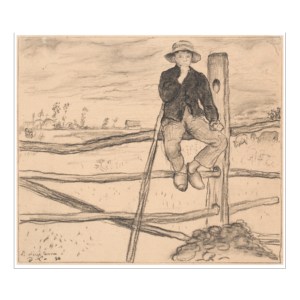Donato Creti
Cremona, 1671 – Bologna, 1749
Portrait of a young boy
Black chalk on paper.
238 x 176 mm – 9 3/8 x 6 15/16 in.
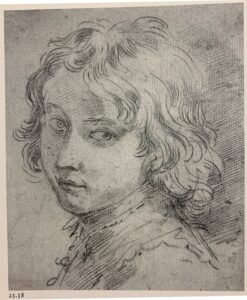
After training with his father Giuseppe Creti, Quadrature painter (perspectives), Donato Creti continues his apprenticeship in Bologna with Lorenzo Rapparini then Lorenzo Pasinelli. In the latter’s workshop, he meets the young Pietro Ercole Fava whose father Alessandro becomes his protector and patron. Working for twenty years at the Fava palace, he also received orders for palace decorations such as the Palazzo Pepoli Campogrande in Bologna or the palace of the family of Counts of Novellara. In 1709 Donato Creti appeared among the founders of the Accademia Clementina or the Academy of Fine Arts in Bologna, of which he became director in 1712.
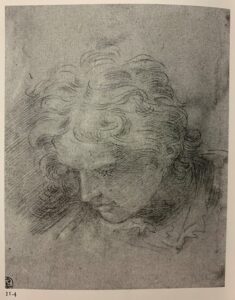
The importance of drawing for Donato Creti is quickly signaled by his contemporaries. Biographer Giampietro Zanotti notifies in his work as early as 1739 Storia dell’Accademia Clementina that he drew with the pen, without a draft underlying the black chalk, on sheets, covering them with landscapes or scenes with many characters[ 1 ] and that he liked to offer them[ 2 ]. Artist Marcantonio Franceschini greets the artist as a grandissimo disgnatore[ 3 ], likewise the young painter Crespi praises : penna molto felice[ 4 ] and specifies that not a day went by without Creti drawing on any medium : Altreo non faceva disignare su libri, sulle carte, e perfino sulle tavole, e su i muri col carbon, e coll’inchiostro[ 5 ].
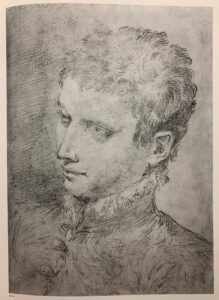
Donato Creti performs, with black chalk on gray paper, a portrait of a young man of three quarters whose gaze is directed down to the left. The identity of the model is not known but two other drawings seem to reproduce the face of the same boy: a Young man’s head[ 6 ] ( fig. 1 ), three-quarters to the left fixing the spectator who passed on the art market in 2008 and another[ 7 ] ( fig. 2 ), leaning forward to the left, kept at the Staatliche Kunstsammlungen in Dresden. We can also bring our drawing closer to another Portrait of a young man[ 8 ] ( fig. 3 ) repeating the same pose with the gaze directed to the left and wearing a brocade jacket.
Condition report – light spots on the entire sheet.
[ 1 ] Giampietro Zanotti, Storia dell’Accademia Clementina di Bologna, Dalla Volpe, Bologna, 2 vol., 1739, vol. II, p. 117-118 : “Quello che fa meraviglia si è il vederne tanti [ deisegni ], e tanti fatti a penna, e paesi e storie di molte figure, e sapere, che senza prima averne sulla carta fatto alcun segno col lapis. Io credo, che in questo egli sia singulare, vedendo a qual bellezza e perfezione son condotti“.
[ 2 ] Same, p. 120 : “Alcun pittore non fu mai più liberale de suoi digni e v’ha più d’uno, che n’ebbe in dono moltissimi“.
[ 3 ] D. C. Miller, “Donato Creti”, Burlington Magazine, CXI, 1969, pp. 25-32.
[ 4 ] Luigi Crespi, Felsina Pittrice. Quick from ‘Pittori bolognesi, Tomo III, che serve di Supplemento all’opera del Malvasia, Bologna, 1769, p. 259.
[ 5 ] Marco Riccomini, Donato Creti. The opere su carta. Catalogo ragionato, Turin, 2012, p. 13; L. Crespi, op. cit, 1769, p. 257.
[ 6 ] Young head man, black stone, 215 x 180 mm ( London, Sotheby’s sale, July 9, 2008, n ° 109 ). See. Marco Riccomini, op. cit., 2012, n ° 23.38.
[ 7 ] Young head man, black stone on gray paper, 253 x 206 mm ( Staatliche Kunstsammlungen in Dresden, Inv. C 487 ). See. Same, n ° 31.4.
[ 8 ] Three-quarters young man’s head, Black stone and scraps of white on gray paper, 421 x 301 mm ( London, Christie’s sale January 10, 1990, lot 66 ). See. Same, n ° 22.4.
